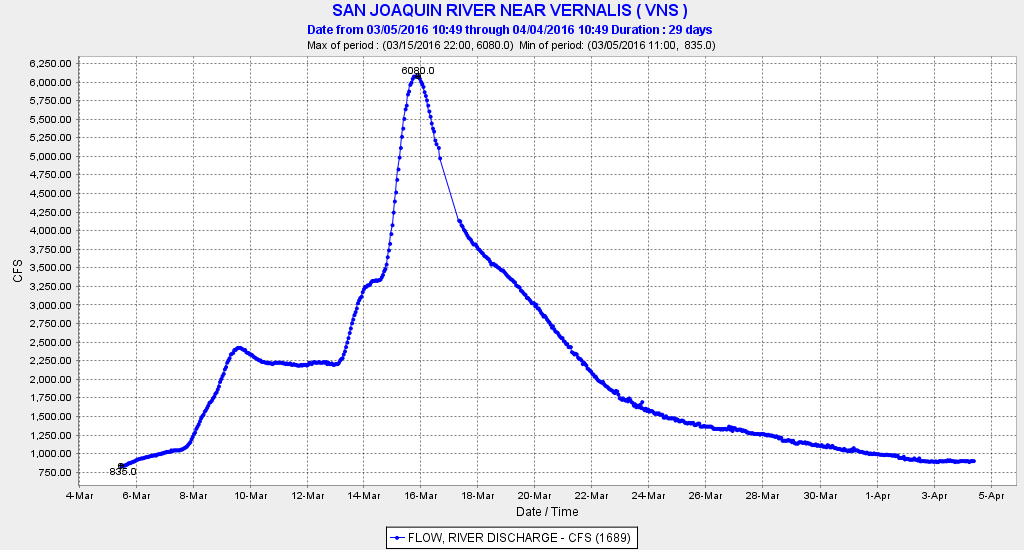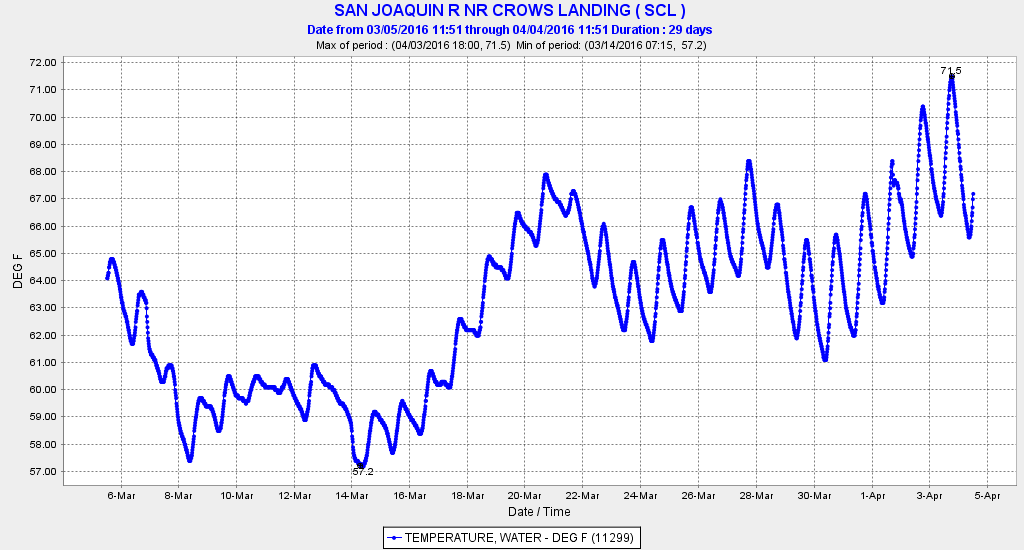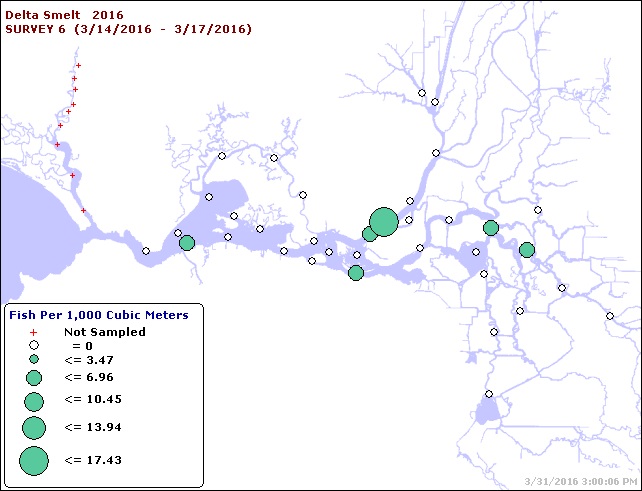CSPA’s fisheries biologist Tom Cannon gave a presentation entitled “Contributing Cause of Smelt Decline: Water Exports” at a symposium on March 29, 2016 at UC Davis. The theme of the conference, sponsored by the Delta Stewardship Council, was: “Delta and Longfin Smelt: Is Extinction Inevitable?”
In his presentation, Tom put forth the hypothesis that the cause of the probable extinction of Delta smelt was the commencement of operation of the State Water Project’s Banks Pumping Plant in the mid-1970s. When Banks came on line, South Delta exports tripled, going from 2 million acre-feet to 6 million acre-feet per year. Tom’s hypothesis is that the mechanism of likely extinction was entrainment of Delta Smelt into the inflow to State and Federal South Delta pumping plants: exports.
The presentation’s first slide shows the familiar long-term Fall Midwater Trawl Index (Figure 1). Tom emphasized the sharp drop in the Index in 1981 (red circle in Figure 1), the first dry year of operations under the 1978 Delta Plan (water quality standards limiting operations of the Delta pumping plants). He noted that the decline likely started in the mid-1970s, but was most severe in 1981. There were recovery periods in the non-drought years of the 1990’s and 2010-2011. However, in 2001-2005, smelt and other Delta species crashed, a period now known as the “Pelagic Organism Decline,” or POD. Following a mild recovery in the wet year 2011, Delta smelt collapsed to record low indices in 2014 and 2015 (indices of 9 and 7, respectively, not shown in Figure 1).
Other slides depict (1) the huge losses of adult smelt as indexed by January salvage numbers in 1981 (Figure 2), and (2) the salvage counts of juvenile Delta smelt in spring 1981 (Figure 3). The total salvage for January 1981 alone was over 10,000 adult Delta smelt, which compares to a total of 56 in January 2015 and 12 in January 2016. The total juvenile Delta smelt salvage in spring 1981 exceeded 100,000; in 2015, it was 4.
An example of salvage during the 2001-2005 POD is winter-spring salvage in 2003 (Figure 4). Tom attributes the POD decline to the tens of thousands of Delta smelt lost to entrainment in winter and spring, including a likely large number of non-detected larvae under conditions of maximum exports.
According to Tom, export entrainment is the primary causal factor for the death spiral of Delta smelt, not low outflow. There were relatively high or improved smelt abundance indices in 1972, 1990, and 1991 (see Figure 1), which were all years with low outflows but also low exports. This is not to say, however, that low outflows are not also factors that contribute to high entrainment (Figures 2 and 3).
Tom concludes that Delta smelt are virtually extinct because their adult spawning numbers are insufficient to provide recovery even under 2016’s good (wet) conditions. Adult numbers are simply too low to produce sufficient offspring (Figure 5). The proof will come this spring, summer, and fall when indices of Delta smelt juveniles will likely remain critically low and not reach 2010 or 2011 levels, the last years when habitat conditions were favorable.
Tom Cannon Presentation – Contributing Cause of Smelt Decline: Water Exports
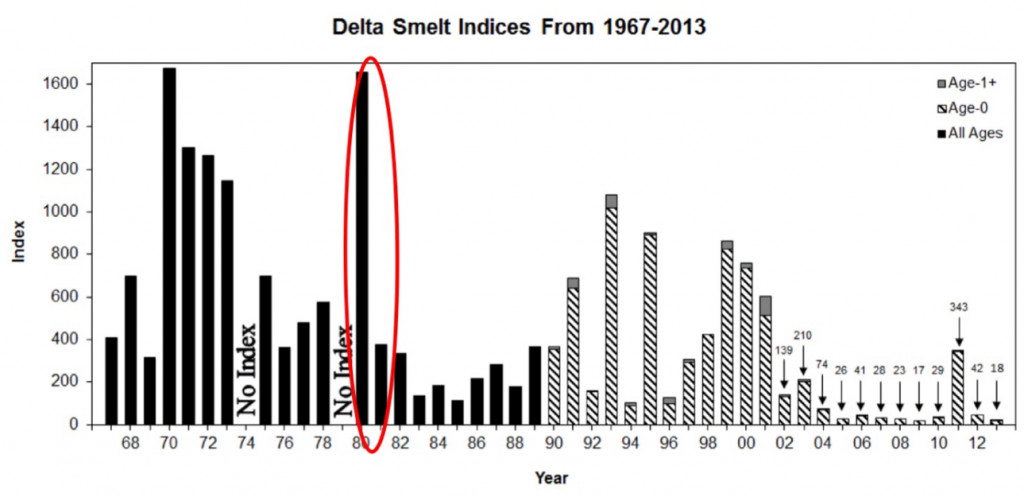
Figure 1. Fall Midwater Trawl Index for Delta smelt 1967-2013. (Source: CDFW.)
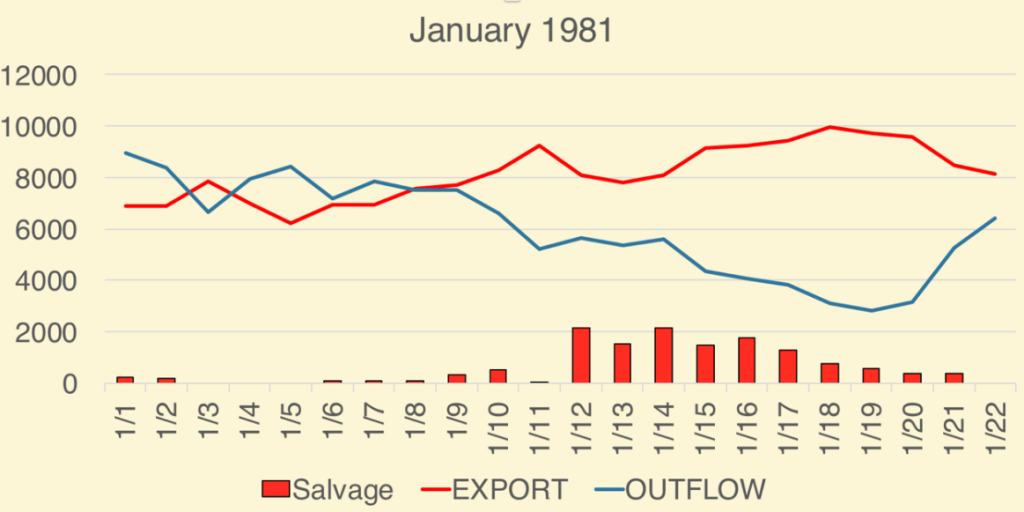
Figure 2. January salvage of adult Delta smelt at South Delta export pumps in 1981. Also shown is export rate (cfs) and Delta outflow (cfs). The maximum allowed export rate is 11,400 cfs. (Data Source: CDFW.)

Figure 3. Spring salvage of juvenile Delta smelt at South Delta export pumps in 1981. Delta smelt juveniles begin reaching salvageable size (>20 mm) in early May. Also shown is export rate (cfs) and Delta outflow (cfs). The maximum allowed exportsrate is 11,400 cfs. (Data Source: CDFW)
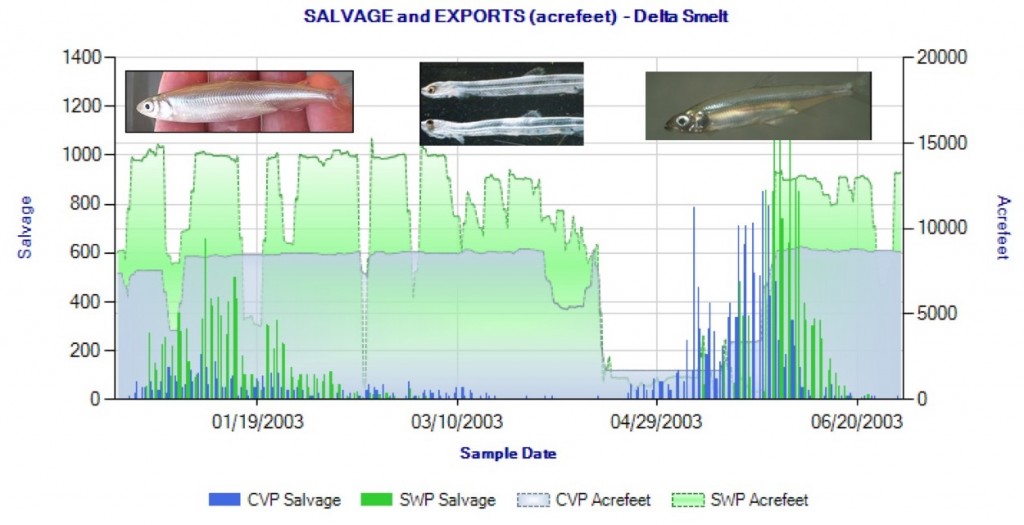
Figure 4. Winter-spring salvage of Delta smelt at south Delta export pumps in 2003. Delta smelt young begin reaching salvageable size (>20 mm) in early May. Also shown is export rate (acre-feet per day) by pumping plant. The maximum allowed export rate is 11,400 cfs (about 23,000 acre-feet per day). (Data Source: CDFW). Winter salvage is primarily adult smelt. Spring salvage is predominantly juvenile smelt (>20 mm). April entrainment of 5-15 mm larval smelt is not accounted for at salvage facilities, because they pass undetected through salvage screens.

Figure 5. Index of adult Delta smelt spawner abundance from winter Kodiak Trawl Survey 2002-2016.
